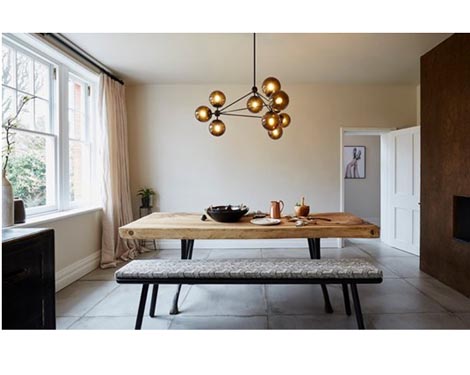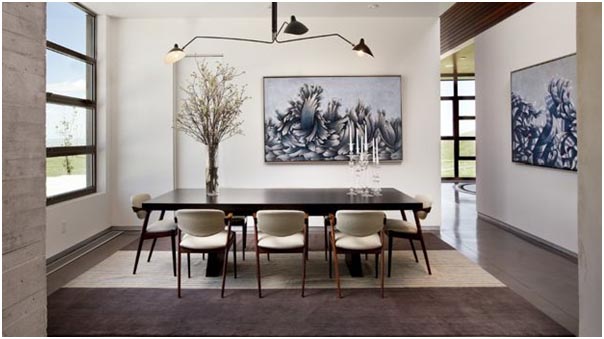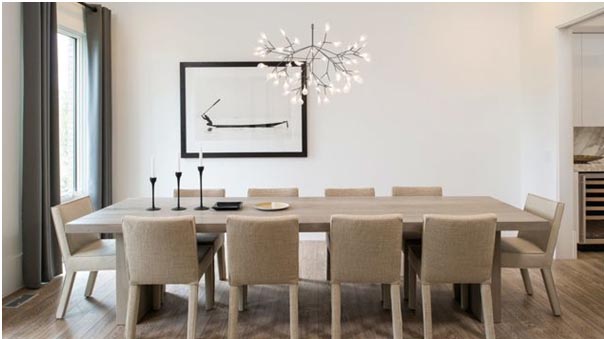What is negative space?
We’re all familiar with the term “breathing space” – that moment when activity and stimulation stop, and we have a chance to take stock and regain balance. In interiors, the area around objects – the negative space – performs the same functions. It rests our eyes and brings positive elements into clear focus, creating a subconscious sense of visual comfort and harmony.

The long view
One of the main advantages of negative space is its ability to eliminate distractions from an outstanding feature and to enhance its effect. Standing back and viewing a room from where it’s most frequently seen can often reveal how an empty space could be used to highlight something you’d like to show off.
In this room, an area of negative space ensures that two striking furniture pieces and a pendant light take centre stage without being interrupted by any objects around them

Here’s another example of negative space being used to subtly emphasize the positive elements in a room. The large-scale artwork is hung low and off-centre to leave negative space for a tall and dramatic floral arrangement and for the quirky angles of the light to shine through.
Asymmetry

Our brains derive emotional pleasure from symmetry, according to physicist Alan Lightman, author of The Accidental Universe. In design, objects mirrored along a central axis represent order, stability and calm. But disrupting the formality of a symmetrical room, as the homeowners have done here, can add energy to an otherwise static space.
Visualize this bathroom vanity with the mirror dead centre and a matching light on each side. Still elegant, but how much more interesting and informal is this asymmetrical but balanced layout?
Architectural emphasis
This homeowner resisted the urge to accessorize the niche or hang artwork in the stairwell. Instead, light showcases the negative space surrounding the serrated edges of the stairs to form a fabulous architectural sculpture.
Alternatively, negative space can de-emphasize architectural features that you don’t wish to draw attention to, such as awkward angles or a too-high ceiling. When you offer plenty of visual interest at floor level, hardly anybody looks upward.
Perfect patterns
Depending on perspective, negative and positive areas may swap places. Viewed one way, the four-petaled floral shape on these tiles is positive, and the white becomes negative space. The illusion is reversible, revealing a pointed white diamond in a black circle.



















Your Message